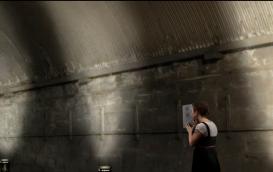The notion of “tactile speech,” as discussed in media and disability studies and histories of science, emerged with the development of twentieth-century communication technologies for deaf and blind people and people with speech disorders. Some highlights include the hearing glove, smart gloves that translate sign language into vocalized speech and vice versa, electrotactile speech processors, and talk-tools using tactile-kinesthetic techniques. As historian and media scholar Mara Mills argues, some of these speech technologies (such as the hearing glove) employ the idea of “material voice” and the capacities of “conventional bodies” for functional communication. Like speech recognition processes, these tools treat speech sounds as indexical, calculable data for repeatable and accountable transmission. However, the experience of sounds may also entail misinformation, decompression, mishearing, and recalculation—take instances of false alarm in everyday life, recalculations by GPS devices, misrecognized phone voices, or misunderstandings of automated voices. Tactile speech, I suggest, may also inform and be informed by these errancies. Examining histories of communication and speech technologies together with practices in sound and new media art, this project explores the implications of such errancies and different manifestations of tactile speech. It intends to contest the association between indexical, repeatable, and accountable transmission and vocalized speech, and further investigate the haptic experience of sound and the possibility of considering voice skin, a multi-sensory interface and medium of both connection and difference across bodies of all kind. The study is part of my book project Building a Voice: Sound, Surface, Skin.

Rafael Lozano-Hemmer, “Voice Tunnel, Relational Architecture 21,” 2013. Commissioned by Park Avenue Tunnel, NYC DOT “Summer Streets.” Detail: New York City, New York, United States. Sketch by Antimodular Research.
Project
(2018)
